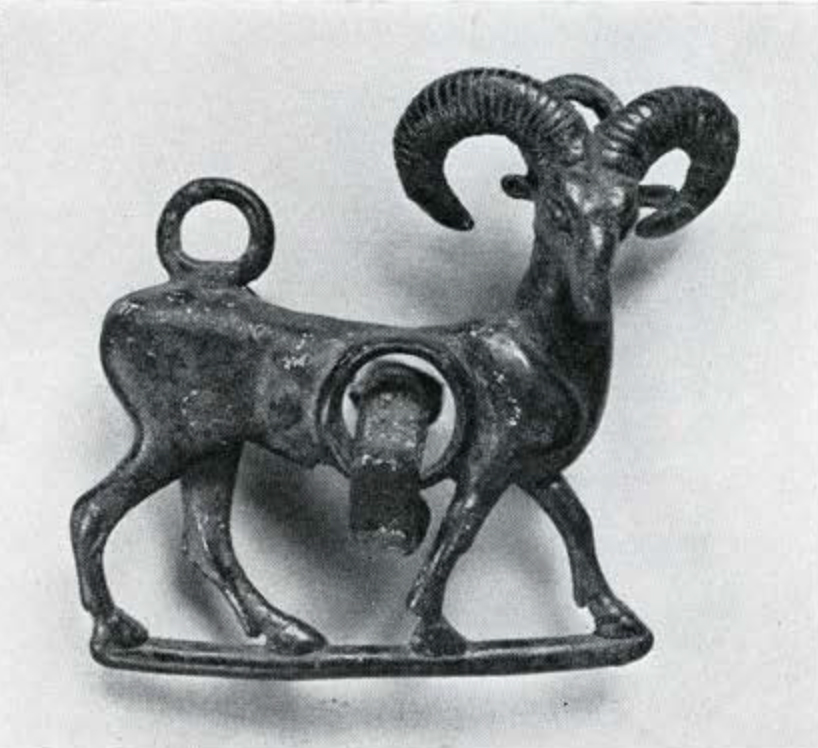On the border of Mesopotamia, Luristan is the highland of Persia, between Hamadan and “Shushan the Palace,” on both banks of the river Kercha. There the bronze objects and the seals-acquired in 1930 by the Museum through Mr. Arthur Upham Pope-were discovered between 1927 and 1930 by the Lur tribesmen in the ruined cities and cemeteries of their wild mountains. They are for the most part the ornaments, harnesses, horse-bits (Figure 49), adzes and axes of the ancient cavalrymen. As the oldest examples of the native art recovered of late in Persia, their strange decoration, naturalistic and conventional, has attracted a good deal of attention. Their evident connection with the Assyrian, also the earlier Sumerian and Elamite models of weapons and forms of art, is confirmed by the presence of seals found in the same graves and dated from 700 to 400 B.C., by an inscription on a bronze cup of Shargani-sharri of Agade (2600 B.C.), and also by the shape of battle axes, of which original types have been recovered in the royal cemetery at Ur. (cf. Luristan Bronzes in the University Museum, 1934.)

Museum Object Number: 30-38-44

